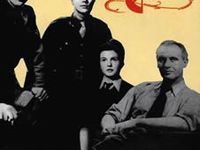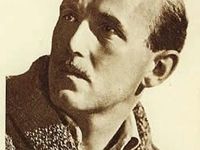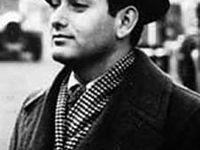The 11th Duke of Marlborough, who has died aged 88, devoted his life to preserving his family seat of Blenheim Palace, Oxfordshire, for the benefit of future generations.
After inheriting the dukedom on the death of his father in 1972, the Duke applied his shrewd commercial flair to the business of pulling in the crowds, introducing regular opening hours, tea rooms, boat trips, as well as a gift shop, maze and butterfly house.
In what he described as “the ongoing battle of Blenheim”, he let out the house for corporate entertaining and the grounds for pop concerts, and even went so far as to open the family’s private apartments to the public.
He introduced proper accounts, insisting that every part of the business should be self-financing, and founded the Blenheim international horse trials, which have become a popular annual event.
Blenheim Palace owes its name to Blindheim, in Austria, where on August 13 1704 John Churchill, who had been created Duke of Marlborough in 1702, held back King Louis XIV’s troops and saved Vienna from a French attack.
To show her gratitude, Queen Anne presented the Duke with the royal manor of Woodstock in Oxfordshire and promised that a palace would be built for him in the grounds to be paid for by the Crown.
The baroque masterpiece that was created by Sir John Vanbrugh is a vast, triumphalist celebration of military victory. The Grinling Gibbons pinnacles show Marlborough’s coronet crushing the fleur-de-lis; the rooftop lions are biting into French cockerels; and there is a captured bust of Louis XIV in the centre of the south front.
The original layout of the trees in the park even mimicked Marlborough’s battle lines, though the grounds were redesigned under the 4th Duke by Capability Brown.
Yet even Queen Anne did not anticipate the grandeur and huge expense of Blenheim, and the house went on to become a financial burden to the Dukes of Marlborough for more than 300 years. The huge expense of maintaining the house often tempted them to desperate stratagems that did little for their reputation — or happiness. Gladstone famously remarked: “There never was a Churchill from John of Marlborough that had either morals or principles”.
In recent generations, the “wicked” 8th Duke had sold off many of Blenheim’s treasures to pay for the Palace’s upkeep; the 9th Duke sold himself to the American heiress Consuelo Vanderbilt, in one of the most unhappy and blatantly arranged marriages in history. Their son, the 10th Duke, was once described by Auberon Waugh as “one of the most richly absurd characters the English aristocracy ever produced, famous for his appalling rudeness, amazing tactlessness and quite extraordinary greed”.
Yet despite their efforts, when the 11th Duke inherited the titles and estates, the Palace and park were in a poor state and he was forced to surrender the Blenheim archives to meet death duties.
“It would be wrong to say,” he observed, “that I was longing to inherit because that would suggest I wanted my father to die, but there were certain things that couldn’t be done while he was alive.”
The 11th Duke’s achievement was in succeeding where so many of his ancestors had failed: in maintaining and improving his estate without compromising his principles or reputation. It was, the Duke said, his dearest wish “to ensure that my heir finds the place in the best possible state of repair and the estate in good order.”
It was a gruelling, uphill battle. Repainting the interiors took seven years, and rewiring took another seven. In 2009 the Duke had to spend £1 million to rebuild the Blenheim Dam and its adjoining cascade, created by “Capability” Brown, to comply with a law requiring that such structures be able to withstand a one-in-10,000-years flood
The Duke’s first two marriages had ended in divorce, and his heir, James, Marquess of Blandford, his eldest surviving son by his first marriage, was deemed for many years to be unsuitable to assume responsibility for the estate. A troubled man with a drugs problem, the Marquess clocked up a string of convictions for burglary, assault, and drugs and driving offences.
In 1994 the Duke and the trustees of the estate obtained a High Court order preventing Lord Blandford from having any management powers over the estate after the Duke’s death. A new trust was established that would oversee the estate’s assets after the Duke’s death, and then pass control to the Marquess’s son, George, when he succeeded. But in 2012, after the Marquess was reported to have been drug-free for five years, the Duke told a television documentary that he would inherit not just the title, but would also be given an executive role in the running of Blenheim Palace — although, like the Duke himself, he would be answerable to the trustees .
The Marquess had often blamed his father for his problems and, partly as a result, the debonair 6ft 5in Duke was sometimes described by profile writers as being remote, formal and stuffy. But the American author Bill Bryson found him “a charming man”, and other interviewers were often surprised to find themselves won over by his sense of humour and warm chuckle. His workforce at Blenheim regarded him as a benign if exacting employer; in 1989 he announced that he would be paying the poll taxes of workers and tenants on his estate.
John George Vanderbilt Henry Spencer-Churchill was born on April 13 1926, the elder son of the 10th Duke of Marlborough by his first marriage to Mary Cadogan, daughter of Viscount Chelsea. His father’s cousin, Winston Churchill, himself born at Blenheim, was one of his godparents.
After Eton, the young Lord Blandford, as he then was, joined the Life Guards, from which he retired in the rank of captain in 1952. Thereafter he involved himself in the management of Blenheim, particularly in the public opening of the Palace.
While his father was still alive, he lived five miles away at Lee Place, a country house which he kept on after becoming duke as a retreat for the family during the busy summer opening season. During the 1950s he served as a councillor on Oxfordshire County Council and became a magistrate.
Having inherited the Marlborough peerages in 1972, the Duke took his seat in the House of Lords and in his maiden speech the next year drew attention to the damage caused to sheep flocks by badgers. After that, he contributed only occasionally to debates, though he was for many years a member of the House of Lords bridge team. He lost his seat in the Lords when Labour banished all but 92 of the hereditary peers in 1999.
The Duke was chairman of Martini Rossi from 1979 to 1996 and president of the Thames and Chilterns Tourist Board from 1974. He also served as president of the Oxfordshire Association for Young People and of the Oxfordshire branch of the Country Landowners’ Association. He was appointed a Deputy Lieutenant for Oxfordshire in 1974.
He was a first-class shot and a good horseman, riding hard to hounds with the Heythrop. He was president of the Sports Aid Foundation (South Eastern Area) and of Oxford United Football Club in 1955. In 1959 he was honorary vice-president of the Football Association.
The Duke’s first wife, whom he married in 1951, was Susan Hornby, daughter of the deputy chairman of WH Smith. They had a daughter and two sons, the eldest of whom died aged two. When, shortly afterwards, his wife left him for another man, the Duke gained custody of their children; they divorced in 1961.
Tina Livanos, the former wife of the Greek shipping tycoon Aristotle Onassis, became the Duke’s second wife in 1961. She left him to marry Stavros Niarchos, who had previously been married to her sister. She and the Duke divorced in 1971.
The Duke married thirdly, in 1972, Rosita Douglas, the daughter of a Swedish count and ambassador to the United States. With her, he had another daughter and two sons, the eldest of whom died in infancy. The marriage was dissolved in 2008, and in the same year he married Lily Mahtani — her father, Narinder Sahni, has been a top executive with the Hinduja Group.
The Duke is succeeded to the Marlborough titles by his eldest son James, Marquess of Blandford, who was born in 1955.
The 11th Duke of Marlborough, born April 13 1926, died October 16 2014
 Filmographie
Filmographie




































